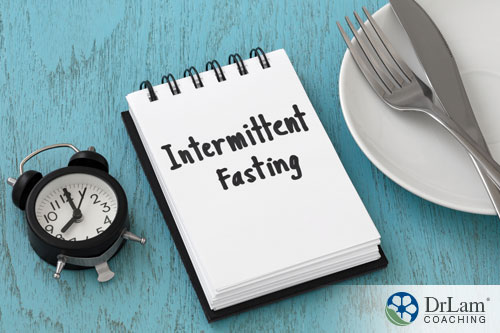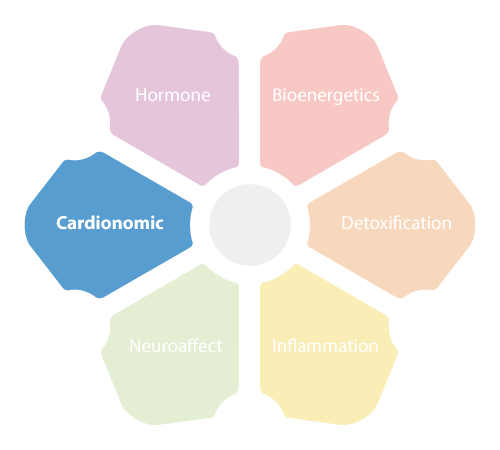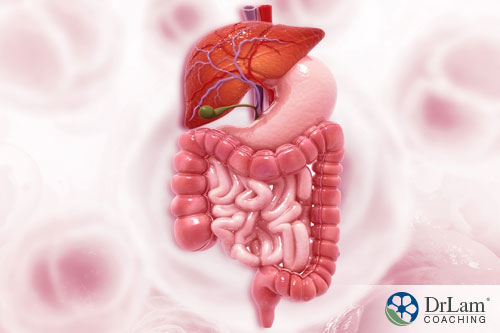 Many people equate the term ‘fasting’ with prolonged periods without food or even anorexia nervosa. Yet fasting, which has many different forms, has been around for thousands of years, both as a means of religious expression and for health purposes. These days, numerous studies show that fasting to reverse heart disease, for example, is a practice with some value and not just as a quick means to lose weight. People who incorporate fasting periods into their lifestyle may actually lose some weight, and fasting for other health reasons has promise as well.
Many people equate the term ‘fasting’ with prolonged periods without food or even anorexia nervosa. Yet fasting, which has many different forms, has been around for thousands of years, both as a means of religious expression and for health purposes. These days, numerous studies show that fasting to reverse heart disease, for example, is a practice with some value and not just as a quick means to lose weight. People who incorporate fasting periods into their lifestyle may actually lose some weight, and fasting for other health reasons has promise as well.
The second highest cause of death in the United States is heart-related conditions, according to the Centers for Disease Control and Prevention (CDC). What is distressing is that many of these deaths could have been avoided if adequate preventative measures had been in place.
A 2018 CDC report indicated that heart conditions and strokes resulted in 2.2 million hospitalizations during the course of 2016. Of these, an astonishing 415,000 ended in fatalities. This means that more than 1,000 Americans are dying of a heart or stroke-related issue each day. Yet, many opportunities to find and even address heart-related issues exist, such as having your blood pressure taken regularly or having your blood lipid count measured.
One thing most medical professionals agree upon is that watching your diet and initiating prevention strategies while you are younger may have a more long-term beneficial effect than implementing healthy practices when you are middle age. This does not mean that a healthier lifestyle at an older age does not have its benefits! It most certainly does. But what it does mean is that if you practice mindful health care at a younger age, both for you and your children, eating more veggies, for example, both you and your children will reap the benefits years later.
People often forget that the health issues they have later in life are often due to unhealthy practices while younger. Plaque on your arteries, for example, which is often discovered during your middle years, does not build up overnight. Nor can you remedy its effect on your health overnight. Taking care of the situation once it has manifest in your fifties or sixties could take years. And more often than not, it starts with lifestyle and diet.
Very often, heart issues are synonymous with obesity and even diabetes or insulin resistance. In many instances, they are the result of a sedentary lifestyle and a diet filled with sugar, fast foods, processed foods, and caffeine.
According to a 2018 CDC publication, obesity has tripled in children since the 1970s. An estimated one in five children between the ages of six and 19 years are regarded as obese. Lifestyle and diet seem to be the two largest factors in what is amounting to an epidemic. If left unchecked, these children may have a future that incorporates insulin resistance, diabetes, and even heart-related conditions.
By focusing on natural methods to address these issues, i.e. healthy exercise and proper diet, you could potentially reverse these possible outcomes, allowing your children (and yourself) the potential of having a healthier body in old age. You may check on calories ingested during the day, eat more plant-based foods, maintain healthy protein intake from animal sources, and cut out sugars, carbohydrate-rich foods, and caffeine.
Another tool you could implement, and one which still has a lot of controversy surrounding it, is fasting to reverse heart disease.
 A study published in 2018 shows that, during 2016, an astonishing 75,000 deaths in the U.S. in the 36-65 age group were caused by heart-related conditions. A significant portion of these deaths may have been preventable. Taking preventative measures could potentially reduce this number by six percent each year, resulting in the saving of approximately a million lives by the year 2022.
A study published in 2018 shows that, during 2016, an astonishing 75,000 deaths in the U.S. in the 36-65 age group were caused by heart-related conditions. A significant portion of these deaths may have been preventable. Taking preventative measures could potentially reduce this number by six percent each year, resulting in the saving of approximately a million lives by the year 2022.
Fasting to reverse heart disease may very well be one of these measures.
Before looking at the human element, let’s take a look at studies conducted on mice, flies, worms, and yeast.
Trials conducted on all four showed amazing similarities. In all four cases, fasting did not disrupt metabolic pathways. It also increased lifespan. “But what does this have to do with human beings,” you may ask. Before going into specifics, let’s first take a look at some observational data. The first has to do with the fasting practices of Mormons. According to Mormon tradition, the first Sunday of every month is a day of fasting. You only have one meal a day, and this is in the evening, skipping breakfast and lunch.
Observational data gathered from a group who sticks to this practice of fasting found they had a 76% lower incidence of cardiovascular conditions than their counterparts who did not practice fasting.
Five control trials were conducted and the results were quite insightful. For instance, three trials indicated an improvement in weight and a decline in obesity-related outcomes. Two trials indicated that fasting to reverse heart disease had a positive outcome and may be associated with a lower prevalence of cardiovascular conditions or diabetic conditions.
Another group that provides a good base for observational data are Muslims who observe Ramadan. During this period, Muslims fast from sunup to sundown. Accompanying this fasting period is not only a change in diet but a change in sleep patterns as well.
Observational data gathered indicates that the risk of stroke during this time, even in the elderly, was not raised. These people, except in extreme cases, did not show serious signs of dehydration, nor a rise in cortisol levels. There was also no significant change in the occurrence of heart attacks.
In other words, fasting did not have much of a significant negative effect on any aspect of their health. Instead, research supported fasting health benefits. As can be seen, by the two examples of people who incorporate fasting into their lives, fasting does not necessarily mean not eating or drinking anything for days on end. There are, in fact, many possible fasting options to consider.
There are numerous fasting regimens to choose from if you decide to implement this practice in your lifestyle.
The Daniel fast is actually spoken about in the Old Testament of the Bible. Followers of this type of fast practice a specific fasting regimen that continues for 21 days at a time. You do not stop eating during this period, but rather limit your type of food intake. Foods commonly consumed include beans and other legumes, whole grains such as millet, buckwheat, and oats, and nuts and seeds. Vegetables include leafy greens, beets, carrots, asparagus, artichokes, cucumbers, zucchini, and aubergines (also referred to as eggplant or brinjals). The Daniel Fast is, in effect, a partial fast.
No preservatives, sweeteners (artificial or natural), white flour, processed foods, or caffeine are eaten during this fasting period.
A study done on the Daniel Fast looked at metabolic and cardiovascular disease risk factors in men and women. The takeaways from this study showed no significant changes, if any, in mental health, body weight, body fat percentage, or resting heart rate. However, subjects had a lower systolic and diastolic blood pressure than before they started. Cholesterol and insulin levels were both lower than during pre-fast testing.
Another takeaway from this study, according to those who did the fast, is that they did not find it difficult to follow the diet during the fast. They became more mindful of their food choices. They also felt that they could carry on with this fasting method with ease.
 This is another method of fasting to reverse heart disease that many people consider. Intermittent fasting focuses on limiting the time of day during which food may be consumed. For example, your last meal might be eaten mid-afternoon, and then you fast until lunch the next day. In other words, you fast outside of the hours you are allowed to eat. You should, however, stay hydrated by drinking as much water as you like outside of your eating hours.
This is another method of fasting to reverse heart disease that many people consider. Intermittent fasting focuses on limiting the time of day during which food may be consumed. For example, your last meal might be eaten mid-afternoon, and then you fast until lunch the next day. In other words, you fast outside of the hours you are allowed to eat. You should, however, stay hydrated by drinking as much water as you like outside of your eating hours.
Studies on intermittent fasting show a decline in weight in obese people due to limited calorie intake, lower insulin levels, improved insulin sensitivity, and significantly lower blood pressure. Any reduction in weight in someone who is obese may be of benefit to their heart health while improved insulin may be beneficial for diabetes.
In its purest form, intermittent fasting does not limit the number of calories you eat at any given meal. Rather, your total daily calorie intake may be lowered because the hours allowed for eating have been reduced. The most common schedule people use is 16:8, meaning they fast for 16 hours and eat within the next 8 hours. An example of this schedule is eating a meal at noon and 6 p.m, and fasting for the rest of the time until the next day at noon.
The 5:2 Fasting Diet is called this because you eat normally for five days but follow a strict, calorie counting diet for two days. Your calorie count for the latter is usually between 500 calories per day for women and 600 calories per day for men.
This type of fasting has gained much popularity because people do not have to worry about counting calories during the five days when not fasting. Many find this type of diet easy to follow and call it a lifestyle change rather than a diet or fasting regimen.
Although this fast allows you to eat what you like on non-fasting days, do keep in mind that binging on junk food for five days is not going to do your overall health any good in the long run. The same goes for your weight.
As a method of fasting to reverse heart disease, the 5:2 fasting regime may prove beneficial. Studies have, so far, been promising, with this method of fasting thus far indicating that:
In this method of fasting to reverse heart disease, you fasting for five days a month. During those five fasting days, you do eat, but a very specific and limited calorie diet. It mimics fasting. You eat a normal diet for the rest of the month.
Obese people with multiple disease risk factors may find the greatest benefit when doing this fast once a month. Other people may find going on this fast every three to four months of benefit.
The food choices during the period of fasting are low in unsaturated fats, sugar, and protein. Foods consumed are mostly vegan, with some fish two to three times a fast. These fish should be high in omega-3, omega-6, and vitamin B12. Good choices include sardines, anchovies, trout, and cod. Furthermore, it is advised that you consume whole grains and a large variety of vegetables and nuts.
Meals should be consumed within a 12-hour period. No food should be eaten during the three to four hours before going to sleep. Typically you consume about 1,100 calories on the first day of your fast, followed by 800 calories per day for the rest of the fasting period.
Studies on this type of fasting to reverse heart disease have shown positive results. This type of fasting regime may:

Furthermore, this type of fasting has been found to reduce insulin-like growth factor 1 (IGF-1), which is often associated with certain types of cancer. It may also help maintain healthy levels of stem cells and regenerative markers and preserve bone density.
A study conducted on a group of obese individuals over a three month period who undertook this type of fasting indicated the above claims may be true. But what made this study astounding was that they showed the benefits of following this regimen even three to four months after completion of the study.
What is more, participants in the study indicated that they had made certain psychological changes with regards to how they thought about food, with many indicating that they had become much more mindful about their eating practices.
It is advised that you stay away from doing any vigorous exercise during your period of fasting and limit your caffeine intake to no more than one cup of coffee a day while doing this fast.
Alternate day fasting to reverse heart disease means that you eat normally one day, and fast or limit your food intake drastically the next. Your calorie intake on fasting days should be at about 25% of what you would normally eat. This process is then constantly repeated.
Studies on this method of fasting to reverse heart disease on obese people showed a reduction in weight and improvements with regards to cardiovascular risk factors.
Interestingly when alternate day fasting was compared to studies on a low-calorie restricted diet, both the fasting and diet groups saw a sharp decline in overall calorie intake. The comparison also found insignificant differences between the two with regards to weight loss and changes in body composition. Neither were there significant differences regarding their blood pressure, fasting glucose, fasting insulin, and heart rate.
Alternate day fasting to reverse heart disease may be an option for people who need to lose weight and who have difficulty following a continuous calorie-restricted diet. They can practice normal, yet preferably mindful, eating habits on the non-fast days, thereby limiting their period of ‘having to do without’ only to each alternate day.
In a nutshell, studies on fasting to reverse heart disease show indications of the following:
 The organs making up the Bioenergetics circuit are the thyroid, liver, and pancreas. In a well-functioning Bioenergetics circuit, these three organs function in tandem, assuring your body a continuous fuel supply for optimum performance. Stress, the major cause of adrenal fatigue, and the corresponding stimulation of your body’s hypothalamic-pituitary-adrenal (HPA) axis, result in your body automatically responding in such a way as to deal with the perceived threat. This automatic response is referred to as the NeuroEndoMetabolic (NEM) Stress Response.
The organs making up the Bioenergetics circuit are the thyroid, liver, and pancreas. In a well-functioning Bioenergetics circuit, these three organs function in tandem, assuring your body a continuous fuel supply for optimum performance. Stress, the major cause of adrenal fatigue, and the corresponding stimulation of your body’s hypothalamic-pituitary-adrenal (HPA) axis, result in your body automatically responding in such a way as to deal with the perceived threat. This automatic response is referred to as the NeuroEndoMetabolic (NEM) Stress Response.
During the period of stress, your Bioenergetics circuit responds by raising your basal metabolic rate in an effort to ensure there is enough fuel going to your brain to keep you up to speed with what is going on and to take immediate action if needed.
The thyroid plays a key role during this period, as it regulates metabolism function. If anything negatively impacts your thyroid causing it to slow down, your metabolism slows down.
The liver plays an essential role in clearing metabolites from your blood. If your liver function slows down, these metabolites accumulate and could become a potential source of toxins that could worsen adrenal fatigue and other conditions in the long run. The liver also releases glucose during times of stress or when your body’s blood sugar count is deemed lower than it should be.
Your pancreas is responsible for insulin secretion. Insulin is your body’s major glucose regulator. During times of stress, more glucose is required. This means your pancreas needs to work harder. If suffering from adrenal fatigue, however, the constantly high demand for fuel, i.e. glucose, may result in a higher than normal blood sugar count, and your pancreas becoming overworked. You may end up with insulin resistance and even diabetes. This state, however, usually occurs during the latter phases of adrenal fatigue.
Fasting may have an impact on your thyroid, liver, and pancreas function.
Fasting may impact the thyroid by causing a drop in thyroid hormone T3 and an increase in reverse rT3. Hormone T3 is necessary for the body’s use of energy. But this drop only lasts for the period of fasting and quickly goes back to normal once normal eating is established.
 With regards to the liver, fasting could potentially result in a decrease in the liver’s glucose release while in a fasting period, although this function would return to normal once fasting is over.
With regards to the liver, fasting could potentially result in a decrease in the liver’s glucose release while in a fasting period, although this function would return to normal once fasting is over.
With regards to the pancreas, fasting may be beneficial, especially in people who happen to be prediabetic or have either type-1 or type-2 diabetes.
To this end, a study done on mice indicated that fasting in diabetic mice may cause a trigger action in the pancreas’ beta cells. These cells detect blood sugar and release insulin if blood sugar levels are too high. By triggering these beta cells, parts of the pancreas that are malfunctioning could potentially be restored to health. Testing on type-1 and type-2 diabetic human tissue samples showed similar effects, although these studies are not conclusive.
The function of your Cardionomic circuit is closely monitored by the adrenal glands, cardiovascular system (CVS), and autonomic nervous system (ANS).
The Cardionomic circuit is activated by stress, starting with your HPA axis and ending in the adrenals. Cortisol output from the adrenals increases in an effort to deal with stress.
At the same time, as part of the NEM, your CVS and ANS are activated and put into a standby mode. They only go into a fully-active mode if the stress increases and your cortisol production goes down. This state of affairs usually comes into being when stress is prolonged and your adrenal glands no longer have the ability to function optimally. One usually encounters this in the latter stages of adrenal fatigue, however.
The activation of your NEM, CVS, and ANS does not happen overnight. Rather, it is a gradual process, with each of the three striving to work together in such a way as to balance the workload and prevent overuse of each of the other systems.
A Cardionomic circuit dysfunction, when all three of these become overloaded, may result in a system dysregulation. The result of this and the accompanying symptoms may have far-reaching negative health consequences.
Initial symptoms may include high blood pressure, an irregular heartbeat, breathlessness, and dizziness. As dysregulation progresses, your symptoms may increase in number and/or intensity.
Symptoms associated with Cardionomic circuit dysfunction include, besides those mentioned:

Another aspect to consider is your hormones. Heightened cortisol production may result in a hormonal imbalance in the long run.
Heightened cortisol production, in the short term, is of benefit to heart health. It keeps inflammatory responses at bay, helps with fuel delivery to the heart, and generally helps you cope with stress.
Long-term heightened cortisol levels, however, can have a negative impact on heart health and may be associated with increased blood cholesterol, high glycerides, and high blood pressure levels. The buildup of plaque deposits in your arteries is also not uncommon. These are all common risk factors associated with heart disease. They may also reduce your inflammatory response to such a level that you become susceptible to infections.
Fasting to reverse heart disease may have numerous benefits with regards to heart health.
Many research initiatives have shown indications that fasting to reverse heart disease is entirely possible, with many other additional benefits, as we have seen. This does not imply, however, that anyone and everyone should jump onto the fasting bandwagon in an effort to maintain or improve their health. In many cases, this could be downright irresponsible, not to mention dangerous. First consulting a professional on the matter might be the best course of action before embarking any form of fasting regimen.
People with certain conditions, or who have certain predetermined markers, may especially be a risk if starting a fasting program. People who should not fast before consulting a healthcare professional include:
 If you are looking to lose weight and improve your cardiovascular health, fasting may be for you if you are healthy or in only mild AFS. However, if you are suffering from advanced adrenal fatigue, it is best to consult an adrenal fatigue specialist before embarking on a fasting diet. In some stages, fasting may help with AFS, however, it could dramatically overtax an already weakened body if not done correctly and under the right supervision.
If you are looking to lose weight and improve your cardiovascular health, fasting may be for you if you are healthy or in only mild AFS. However, if you are suffering from advanced adrenal fatigue, it is best to consult an adrenal fatigue specialist before embarking on a fasting diet. In some stages, fasting may help with AFS, however, it could dramatically overtax an already weakened body if not done correctly and under the right supervision.
Research conducted on fasting to reverse heart disease seems positive. Conclusions thus far have shown mostly beneficial results related to heart health, inflammation, cholesterol, insulin, and other conditions. Amongst these are lower blood pressure levels, weight loss, lowering blood sugar levels, and numerous others.
